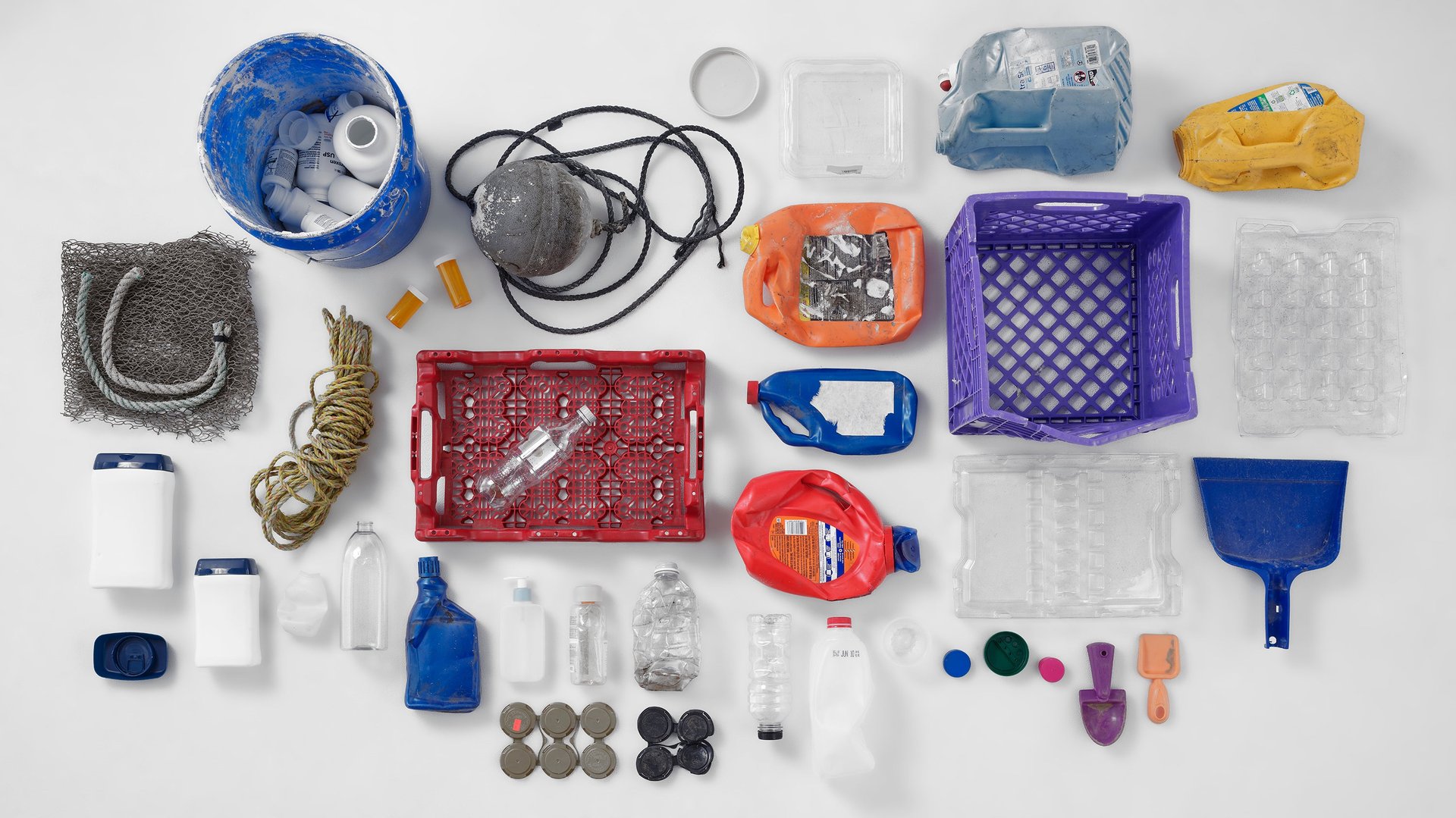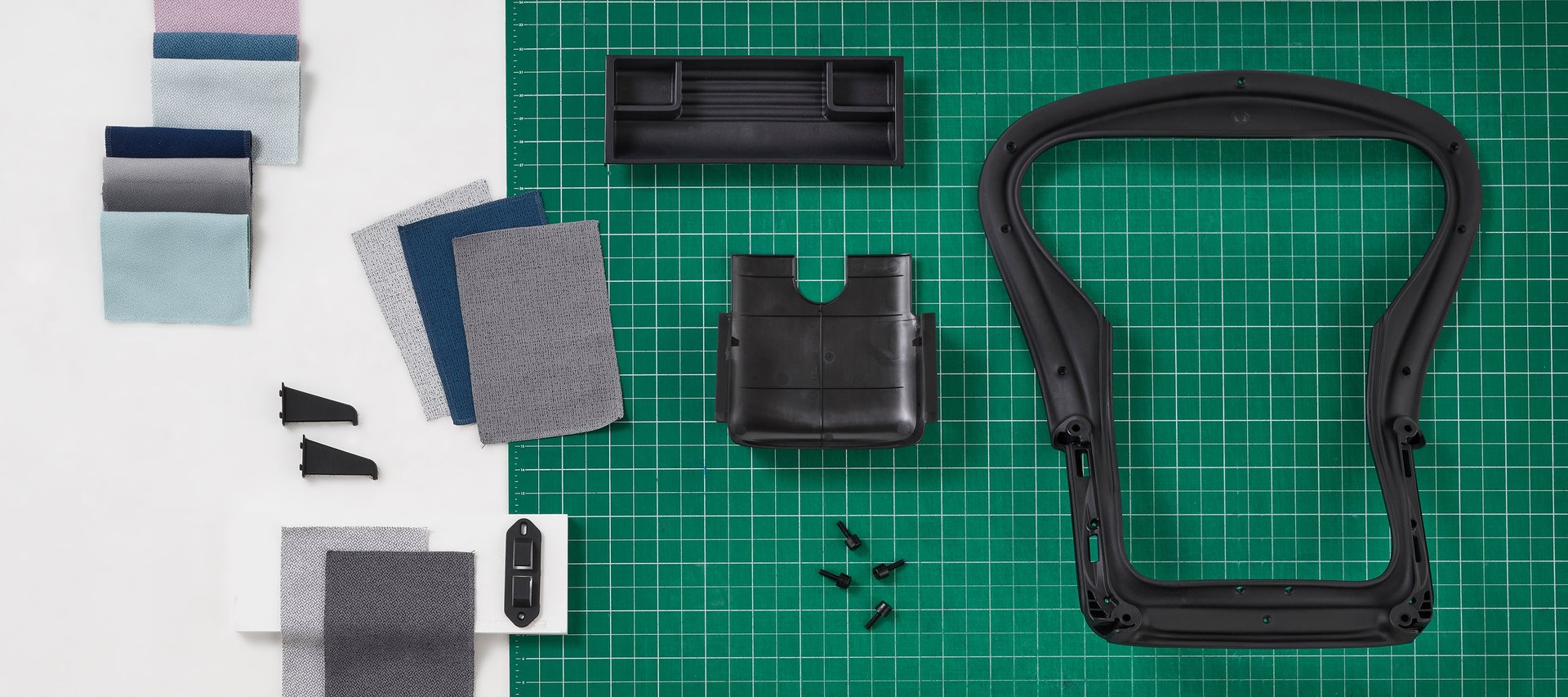The iconic Aeron office chair is vying to be a symbol of sustainable design
Crafted as an ergonomic solution for restless tech workers in the 1990s, Herman Miller’s distinctive Aeron office chair became an instant design classic and a status symbol for the innovation-minded set. Its hefty $1,000 price tag didn’t stop the so-called “Dot-com Throne” from becoming a bestseller.


Crafted as an ergonomic solution for restless tech workers in the 1990s, Herman Miller’s distinctive Aeron office chair became an instant design classic and a status symbol for the innovation-minded set. Its hefty $1,000 price tag didn’t stop the so-called “Dot-com Throne” from becoming a bestseller.
Now Herman Miller is hoping to parlay Aeron’s cache to address a grave environmental problem and curb the worldwide furniture industry’s significant carbon impact.
The 116-year old company announced on Sept. 1 that the next generation of Aeron chairs will be manufactured using discarded plastic bottles and fishing nets culled from coastal cities in India and Indonesia. It anticipates that using ocean-bound plastic waste in the supply chain will prevent about 150 tons of plastic—approximately 400,000 milk jugs or 23 million water bottles—from further polluting the world’s waterways.
By using the Aeron as a test case—the chair, a Museum of Modern Art-approved design icon, has won several awards including “design of the decade” from the Industrial Designers Society of America—Herman Miller hopes to demonstrate that tricky waste material can be engineered to create products of high design.
“The ocean-bound plastic we used does not alter our warranties, our expected performance, and what we want our customers to expect,” says Bob Teasley, who oversees supply management at Herman Miller. “That’s the standard we hold ourselves to.”
The task of rescuing and repurposing ocean-bound plastic
Previous editions of the Aeron chair have been manufactured partially with reclaimed polyethylene terephthalate from plastic water bottles. The crucial change for the new generation of the Aeron lies in the sourcing of the plastic.
Instead of going to its usual vendors who collect, sort, wash, and pelletize the plastic into a consistent substrate, Herman Miller joined NextWave Plastics, a consortium that aims to divert tons of plastic from entering the ocean. Through NextWave, the company worked with coastal communities in India and Indonesia to harvest the plastic. Then, bags of pulverized plastic were sent via shipping containers to Herman Miller’s plant in Michigan. (Mindful of the carbon impact of ferrying materials across the world, the company has found a way to pack the plastic with other shipments being sent to its plant in Zeeland, Michigan.)

Mixed sources: Plastic rescued from waterways make up the Aeron chair.
It took Herman Miller about three and a half years to switch up its production process and get to a point where it could use ocean-bound plastic at scale. The company found that compared to recycled PET from suppliers, the array of plastic rescued from waterways presented a technical challenge in terms of consistency. (Unlike fashion brands that can romanticize the “one-of-a-kind” quality of clothing made from mixed sourcs, a chair produced in mass quantities must offer the same quality and performance across the board.)
For now, material from ocean-bound plastic is only available in black—an effort to mask variations in color—but Teasley says they’re currently experimenting with other colors.
In the course of development, Herman Miller also produced items from ocean-bound plastic like utility trays and a textile called Revenio.
How Herman Miller’s sustainability efforts can impact the furniture industry at scale
Gabe Wing, Herman Miller’s director of sustainability, hopes the project will have a larger impact on the entire contract furniture market. Herman Miller has shared its research with NextWave’s members, which includes competitor brands like IKEA and Humanscale.

Wing, a chemical engineer who has worked at Herman Miller for over 20 years, sees parallels to the role Herman Miller played in leading the industry in caring about tropical deforestation in the early 1990s, when it stopped using Brazilian rosewood in the Eames lounge chair. “I look at what we’re doing with the ocean as another case of us trying to do the right thing,” he says. “Hopefully we’re inspiring others, too.”
🎧 For more intel on sustainable design, listen to the Quartz Obsession podcast episode on office chairs. Or subscribe via: Apple Podcasts | Spotify | Google | Stitcher.
Teasley says the company was more interested in propagating the use of ocean-bound plastic than using it to gain a market advantage during a time when sustainability is a top concern for consumers. “We’ve told our suppliers that we want them to offer this material we’ve developed together to other companies,” he says. “We know if we don’t do that, we’ll have a very limited impact.”